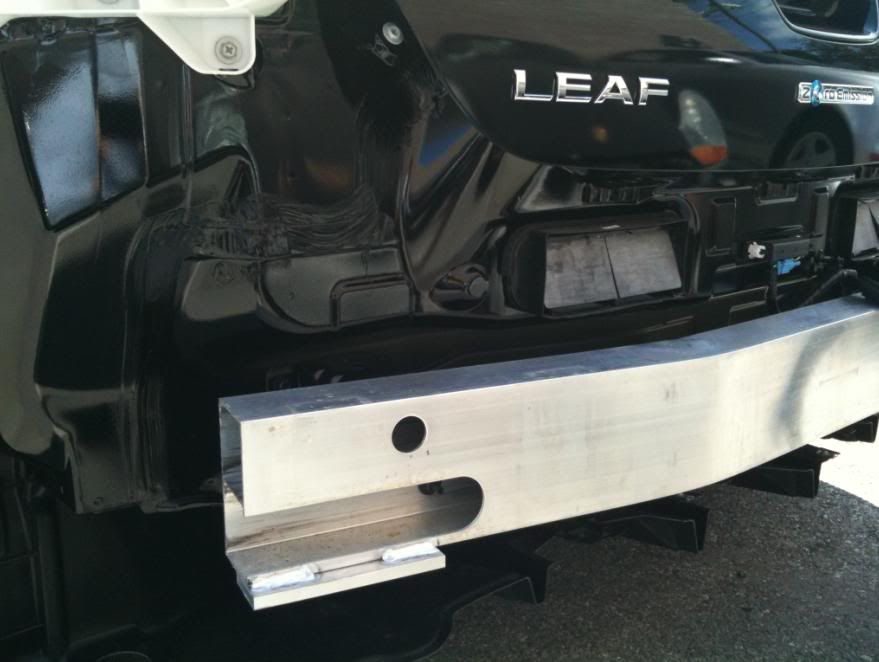Somebody 'dinged' me, and their insurance paid for a new bumper cover.
I took this picture while it was off in case anyone is interested what it looks like underneath:

By the way, on some older cars I had found some sort of spring/shock piston connecting the bumper to the frame so it could bounce back when bumped, but it looks like the Leaf aluminum bumper is bolted straight to some frame mounts, so it seems like any significant impact could bend the metal bodywork. The bumper cover itself may absorb ~5MPH impact, but I don't think you want to get hit much faster than that.
I took this picture while it was off in case anyone is interested what it looks like underneath:

By the way, on some older cars I had found some sort of spring/shock piston connecting the bumper to the frame so it could bounce back when bumped, but it looks like the Leaf aluminum bumper is bolted straight to some frame mounts, so it seems like any significant impact could bend the metal bodywork. The bumper cover itself may absorb ~5MPH impact, but I don't think you want to get hit much faster than that.
